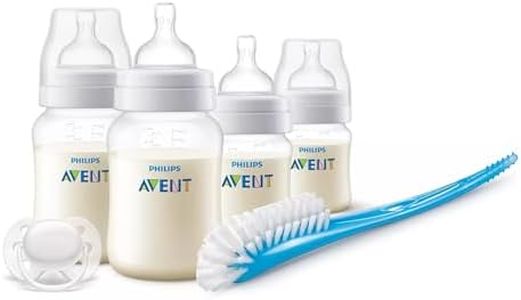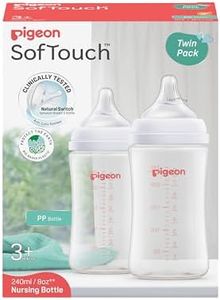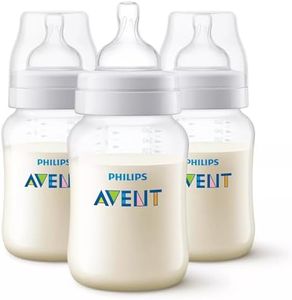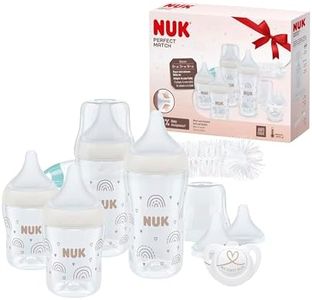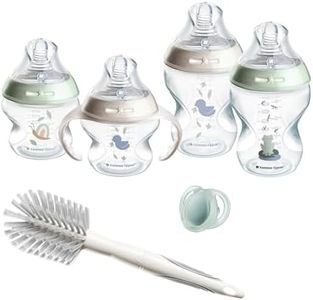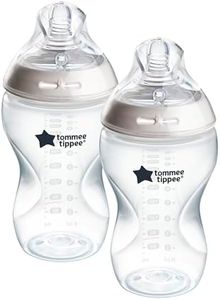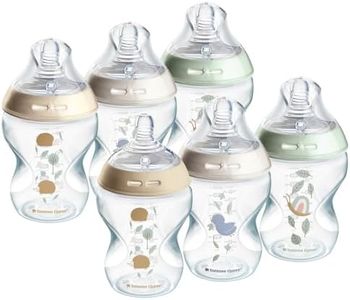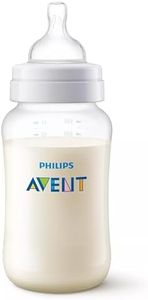We Use CookiesWe use cookies to enhance the security, performance,
functionality and for analytical and promotional activities. By continuing to browse this site you
are agreeing to our privacy policy
10 Best Baby Bottles
From leading brands and best sellers available on the web.Buying Guide for the Best Baby Bottles
Choosing the right baby bottle can make feeding easier for both you and your baby. There are a variety of bottle types, materials, shapes, and nipple designs—all made to accommodate different needs, ages, and preferences. Understanding what each feature means and how it affects your baby's comfort and feeding experience will help you find the best bottle for your situation. Pay attention to your baby's age, how they feed, and your own practical needs like cleaning and on-the-go use.MaterialBaby bottles are generally made from plastic, glass, stainless steel, or silicone. Material is important for durability, weight, safety, and ease of cleaning. Plastic bottles are lightweight and unlikely to break if dropped, but some parents prefer glass for its resistance to staining, odor retention, and chemical leaching. Stainless steel is shatterproof and long-lasting but less common. Silicone bottles are flexible and soft. Think about your priorities: if you want easy transport, plastic might suit; for chemical-free peace of mind, go for glass or stainless steel.
Bottle ShapeBottles come in different shapes: standard, wide-neck, angled, or anti-colic designs. Shape affects how easy bottles are to clean, fill, and hold during feeds. Standard bottles are straight and simple, wide-neck bottles are easier to fill and clean, angled ones help reduce air intake (potentially decreasing gas), and anti-colic bottles are specifically designed to minimize the amount of air a baby swallows. If you want to minimize fussiness, you might consider an anti-colic or angled bottle. If easy cleaning is your main concern, wide-neck bottles are a good option.
Nipple Flow RateThe flow rate of the nipple, which is how quickly milk comes out, is crucial for your baby's comfort and safety. Flow rates can usually be found as slow, medium, or fast (or based on age ranges). Slow flow is best for newborns who are learning to suck and swallow; older babies may prefer medium or fast flow as their feeding skills grow. Match the flow rate to your baby's age and feeding style—if your baby seems frustrated or dribbles milk, the flow may be too fast; if they have to work too hard, it may be too slow.
Nipple Shape and MaterialNipples vary in shape (standard, orthodontic, wide, etc.) and material (usually silicone or latex). Shape and material can affect how easily a baby latches and whether the bottle mimics a breast. Some babies have strong preferences, especially if they also breastfeed. Silicone is more durable and retains its shape, while latex is softer and more flexible but may wear out faster. Consider any sensitivities your baby may have or preferences they show—some may take to a unique shape or feel better.
Ease of CleaningSome bottles have lots of parts designed to minimize air intake or ease colic, but these can be more challenging to clean. Simple designs tend to be easier and faster to wash, either by hand or in the dishwasher. If you’re feeding frequently or want something simple for travel or daycare, a design with fewer pieces might work best for you. Assess how much time you're willing to spend cleaning and whether you have access to a dishwasher when choosing.
Size (Capacity)Baby bottles come in different sizes, usually ranging from around 4 to 9 ounces (120 to 270 ml). The right size depends on your baby’s age and how much they drink per feed. Newborns often need smaller bottles as they drink less at a time, while older infants may need larger bottles for bigger meals. Think about your baby’s current feeding routine, but also whether you want a bottle that can be used as your baby grows.


